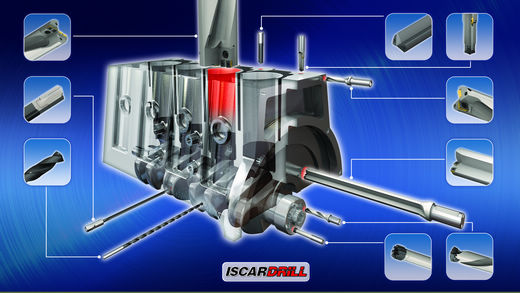An ordinary supermarket generally uses about 48,750 units for about 35 kinds of canned beans, but a tool company has 40,000 tools with only English specifications! From the digital comparison, it can be seen that choosing the canned beans is a breeze compared to selecting the most suitable tool! The choice of tools needs to be considered in terms of matching with the machine and the highest quality parts can be machined with the shortest time and lowest cost. We will explore how to make tool selection from the following aspects:

1. The most important tool.
Any work of a tool that stops working means a pause in production. But it does not mean that every tool has the same important position. The tool with the longest cutting time has a greater impact on the production cycle, so the same tool should be given more attention. In addition, you should also pay attention to the processing of key components and the most demanding tools in the machining tolerance range. In addition, tools that have relatively poor chip control, such as drills, grooving knives, and threading tools, should also be focused. Poor shutdown due to poor chip control.
2. Match the machine tool.
The tool is divided into a right-hand knife and a left-hand knife, so it is important to choose the right tool. Normally, right-handed tools are suitable for counter-clockwise (CCW) machines (viewed in the direction of the main axis); left-handed tools are suitable for machine tools that rotate clockwise (CW). If you have a few lathes, some hold the left hand tool, and the other left and right hands are compatible, then choose the left hand tool. For milling, people tend to choose more versatile tools. However, even though such tools cover a larger processing range, you immediately lose the rigidity of the tool, increase the deflection of the tool, reduce the cutting parameters, and are more likely to cause machining vibration. In addition, the robot that replaces the tool with the machine tool also limits the size and weight of the tool. If you are purchasing a machine with a cooling hole in the spindle, please also select a tool with an internal cooling through hole.
3. Match the material being processed.
Carbon steel is the most common material to be machined, so most tools are based on optimized carbon steel machining designs. The blade grades are selected based on the material being processed. Tool manufacturers offer a range of tool bodies and matching inserts for non-ferrous materials such as superalloys, titanium alloys, aluminum, composites, plastics and pure metals. When you need to process the above materials, please select the tool that matches the material.
4. Tool specifications.
A common mistake is that the selected turning tool size is too small and the milling cutter size is too large. Large-size turning tools are more rigid; large-size milling cutters are not only more expensive, but also have a longer cut-off time. Overall, the price of large gauge tools is higher than that of small gauge tools.
5. Choose a replaceable blade or a regrind tool.
The principle to follow is simple: try to avoid grinding the tool. In addition to a small number of drills and face milling cutters, as far as possible, the choice of replaceable blade or replaceable cutter head tool. This will save you labor costs while achieving a stable processing result.
Enameled Wire,Enameled Copper Wire,Copper Wire
Copper Clad Aluminum Wire Co., Ltd. , http://www.aluminum-wire.com